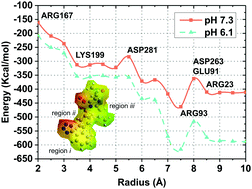Quantum binding energy features of the drug olmesartan bound to angiotensin type-1 receptors in the therapeutics of stroke
Abstract
Stroke is the second most common cause of mortality worldwide and the third most common cause of disability. Stroke causes and hemodynamic consequences are heterogeneous, making blood pressure management in stroke patients complex. Knowing that hypertension is the most prevalent risk factor for stroke, the use of antihypertensive drugs to reduce blood pressure is also essential for the prevention of cardiovascular events before and after stroke. Evidence from clinically relevant studies demonstrates a reduction in morbidity and mortality due to angiotensin type-1 receptor (AT1) blockers. In excessive activity in the brain, this receptor can promote exaggerated sympathetic and hormonal responses caused by stress, vulnerability to cerebrovascular ischemia, and brain inflammation. In addition to its preventive effect, the antihypertensive drug olmesartan medoxomil has shown promising activity in the immediate treatment of both ischemic and hemorrhagic stroke. Olmesartan (OLM) belongs to the family of angiotensin receptor blockers (ARBs) and acts as an inverse agonist with high selectivity and potency for the AT1 receptor. Thus, the present work describes the profile of the AT1 receptor in terms of binding energies and intermolecular interactions with this FDA-approved drug. The X-ray crystallographic structure of the OLM-AT1 system is considered, and the Electrostatically Embedded Molecular Fractionation with Conjugate Caps (EE-MFCC) scheme is applied within a dispersion-corrected Density Functional Theory (DFT-D) framework, taking into account the B97D/aug-cc-pVTZ level of theory. We investigated the binding energies of 105 residues presented within a pocket radius of 10 Å, predicted the energetic relevance of the olmesartan regions and the influence of each protein segment on OLM-AT1 binding. Finally, our results demonstrate that the total binding energy in the pocket ligand is higher in acidic environments, proposing that OLM can promote its neuroregenerative role longer than in the physiological environment, corroborating its use post-stroke.



 Please wait while we load your content...
Please wait while we load your content...